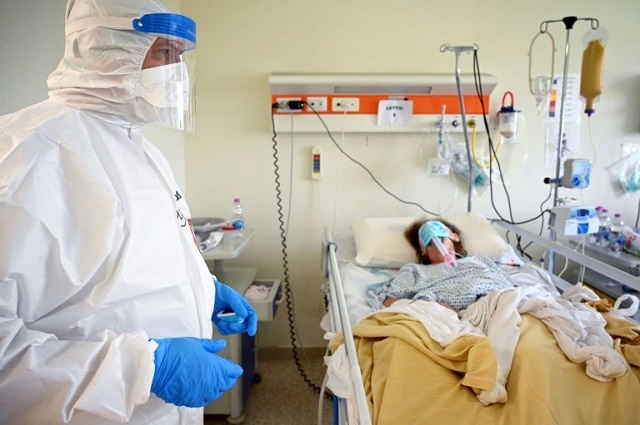
London, United Kingdom | AFP | While the British government insists it has been “guided by science” and has taken “the right decisions at the right time”, the toll of 42,000 coronavirus deaths has fuelled criticism.
Here are some of the reasons offered to account for Europe’s heaviest official toll.
– Late lockdown –
The most frequent accusation levelled at Boris Johnson’s government is that it took too long to announce a lockdown.
Government adviser and epidemiologist Neil Ferguson told a parliamentary committee on June 10 that locking down a week earlier than March 23 would have reduced the death toll “by at least half”.
“We frankly had underestimated how far into the epidemic this country was,” said the scientist.
At the time, the official Scientific Advisory Group for Emergencies (Sage), of which Ferguson was a member, told the government not to lockdown.
“Sage was unanimous that measures seeking to completely suppress spread of Covid-19 will cause a second peak,” said minutes of the group’s March 16 meeting.
Ferguson resigned from the panel in May after breaking lockdown rules.
James Naismith, Director of the Rosalind Franklin Institute at Oxford University, said “during the exponential phase of the virus, even a few days can make a big difference”.
“The UK, like many other countries, struggled to properly understand the true extent of viral infection and were, as a result, slower to act,” he said.
– Undetected imported cases –
British scientists initially thought two-thirds of cases coming from abroad were going undetected.
But the latest data suggests the number was nearer 90 percent, according to Ferguson.
According to official figures, only 273 of the 18.1 million people who entered Britain by air in the three months prior to lockdown were quarantined.
Most travellers were instead just given a leaflet detailing the symptoms of the disease and the steps to be taken if they thought they might have it.
Almost two thirds of cases in Britain came from just over 1,000 people travelling from Italy, Spain and France, who then infected others, found a study by researchers from the universities of Oxford, Edinburgh and Birmingham.
Scientists traced the genetic fingerprint of the virus and estimated that 34 percent of the cases came from Spain, 29 percent from France, 14 percent from Italy and 23 percent from the rest of the world — with less than 0.1 percent coming from China.
Travellers including British residents arriving in the country from June 8 are now subjected to a mandatory 14-day quarantine — a measure heavily criticised by the aviation and tourism sectors, which have been devastated by the pandemic.
The government’s scientific adviser, Patrick Vallance, admitted to the press that the quarantine was more political than scientific.
– Retirement homes –
Around 30 percent of deaths linked to the virus have occurred in British nursing homes, according to official data, although Ferguson claims it could be nearer 50 percent.
Although comparable to other European countries, there are accusations that official decisions helped spread the disease in care homes.
Not all of the 25,000 patients who were transferred from hospitals to nursing homes at the height of the pandemic — between mid-March and mid-April — were tested for the disease, according to a report by the National Audit Office, an independent parliamentary body.
Unison union official, Christina McAnea called it “simply scandalous and accelerated the spread of the virus among an obviously high-risk group”.
The government insists that it made these establishments a “priority” from the start of the crisis.
 The Independent Uganda: You get the Truth we Pay the Price
The Independent Uganda: You get the Truth we Pay the Price


